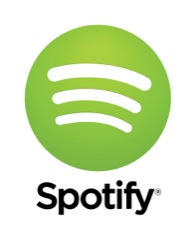Spotify Tries A Little Transparency
 In conversations and blog posts over the future of music, Spotify has often served as a convenient punching bag.
In conversations and blog posts over the future of music, Spotify has often served as a convenient punching bag.
In concept, this Swedish startup can seem to threaten the entire existing music business model by letting people stream the songs of their choice for free in return for listening to the occasional ad, or without ads or a usage cap for a small monthly fee.
In specifics, it’s left people to guess what royalties it pays to artists–with some of the most public evidence being complaints by musicians such as Thom Yorke and David Byrne about how little they made on the service.
On Monday, Spotify offered new answers to the “when did you stop beating your wife’s CD collection?” query at a site called Spotify for Artists.
The first was a reasonably clear response about what it pays. There is no one per-stream rate–how roughly 70 percent of its revenue gets distributed to rights holders varies according to such criteria as listeners’ countries, how many Spotify users paid for access and particular contracts with labels–but it averages between .6 and .84 cents per stream.
Lest you think that’s a pathetic reward–if far more than the .007 cents per-stream rate Songwriters Association of Canada president Eddie Schwartz cited from an unidentified artist’s Spotify royalty statement at the Future of Music Summit in October–a subsequent section provides anonymized examples from July 2013.
Over that month, a “niche indie album” netted $3,300, a classic-rock album $17,000 and a “breakthrough indie album” $76,000. And with 40 million paid subscribers, instead of the current 6 million, those releases would have netted $17,000, $87,000 and $380,000–but Spotify has to get those other 34 million premium users first.
The pessimistic read on the July figures is that, in the case of the niche indie release, they don’t amount to a respectable living unless you’re a one-man band.
But it would be quite the achievement for a band to rely entirely on Spotify. It would have to boycott iTunes and Amazon, not sell CDs, not sign up for SoundExchange to get its share of performance royalties for Internet and satellite-radio play, never tour and never sell merchandise.
(Then again, if you do expect Spotify to take over the world, shouldn’t that 40-million-subscribers forecast seem too conservative?)
The also pessimistic, more accurate read is that the musicians in question may not get much of this sum because their record label took its cut first and then took its time handing over their share. At Evolver.FM, a blog hosted by the music-analysis firm Echo Nest, Eliot Van Buskirk speculated about what might come next:
“… once recording artists and songwriters see how much Spotify is paying labels (and then publishers) on their behalf, they might notice how little of that money they’re actually seeing [….] Their very next phone call could be to their label or publisher, wondering where all that Spotify money is going — or to their manager, to see about switching labels or distributing music without a label.”
Their next move after that might be to take advantage of a new, free option: an analytics service that lets artists know more about their Spotify audiences.
Done with an outside firm, Next Big Sound, this will report on “how much your music is being listened to on Spotify, which of your songs are most popular, and demographic information about your fans like their age, gender and location”–plus fans’ Twitter and Facebook engagement.
That opens up a lot of marketing possibilities–for instance, it will start letting artists sell merchandise through its apps as part of a deal with Topspin Media, a crafty fan-relationship service.
Future of Music Coalition co-founder Kristin Thomson noted a more immediate benefit to musicians: leverage. “I’m glad to see data sharing DIRECTLY with artists and their management, which could provide artists with a sense of listens and user demographics,” she wrote in an e-mail. “It could also help them do their own math on what they’re owed in royalties and have more leverage in dealing with their record labels or aggregators.”
If you want to see a longer-term benefit, look outside Spotify. Now that it’s uncloaked its payout rates, other streaming services have an obligation to be at least as transparent–a point Thomson’s colleague Casey Rae made in a post Wednesday–and an opportunity to document how they can offer a better deal.








